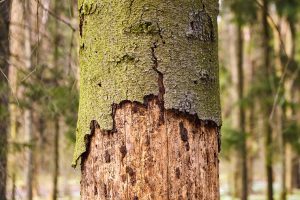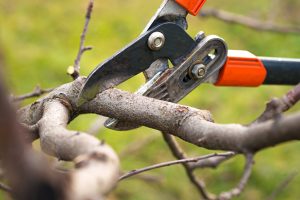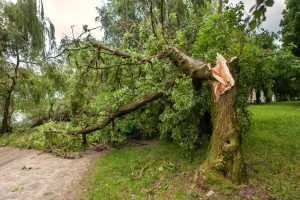There’s something satisfying about being able to look at a plant or tree and know exactly what it is.
This can also be incredibly valuable if the tree is on your property and needs care. Plus, if you have a tree you want to remove, it’s best to identify it first to find out if it has valuable wood or properties.
Keep reading to find out how to identify common trees in Augusta, Georgia. In doing so, you may be able to identify trees on your land that may need some extra love based on their needs.
Identifying Common Trees
No matter where you live, the basic tree identification principles are the same.
You’ll want to observe the tree’s leaves, fruits, branches, trunk, shape, height, and environment.
It may sound like a lot — don’t worry. You really don’t need to memorize anything as there are plenty of online guides for you to reference.
These identification markers are more so for you to understand the language used in guidebooks and references. That way, when you’re researching to confirm a tree’s species, you know what the guide is saying.
The first thing you’ll want to look at is the tree’s environment.
Tree Environments
If you were to try to figure out what a tree is without considering your geography, you would have a lot of information to dig through.
To make it easier, only consider trees in Augusta, Georgia.
From there, take a look at the tree’s environment.
Does it live near a mountain or river? Does it get a lot of sunlight or is it shaded by others? Does it have dry, well-drained soil or is it wet?
Noticing these things will help point you in the right direction and will eventually narrow down some of the options.
Still, there are 250 native species to the state of Georgia. To identify which one you’re looking at, you’ll want to take a closer look at its leaves.
Tree Leaves
There are a few different factors to consider when identifying trees by their leaves. Keep in mind that this method should be used in addition to looking at the other parts of the tree.
Leaf Type and Color
Figure out whether the tree in question is coniferous or deciduous.
Coniferous trees have needles rather than leaves and are evergreen, meaning they do not lose needles in the fall or winter. They reproduce with cones.
Deciduous trees have broad leaves that may change colors in the fall. They usually reproduce via flowers spreading seeds.
Leaf Shape
If the tree is deciduous, you can identify it by looking at the shape of its leaves.
Leaf shape refers to the overall shape of one individual leaf.
They can be heart-shaped or lobed, for example.
Leaf Margin
The margins of a leaf are its edges.
For example, they can be smooth or wavy.
Leaf Arrangement
Finally, a part of identifying trees is looking at the leaf arrangement.
This refers to the position of the leaves on the leaf stem. There are three main types of leaf arrangements.
The first is alternative, meaning the leaves alternative across the stem rather than being straight across from one another. When they are straight across from one another, they are known as having an opposite arrangement.
Finally, leaves can have a whorled arrangement. This means that there are three leaves per node and may have alternate and opposite arrangements throughout the plant.
Looking at a Tree’s Fruit and Flowers
Another key part of figuring out what tree you’re looking at is examining its fruits and flowers.
This includes acorns, cones, and actual flowers.
These components are how the tree reproduces. Looking at them will get you one step closer to identification.
What If There Are No Leaves or Fruit?
If this is the case due to the season or a tree is decaying, you can identify it by its branches.
This is a good tactic even if the tree has the other parts.
You’ll want to look at the angles of branches from the trunk, how low on the trunk they begin, their symmetry, and their thickness or thinness.
The Tree Trunk Can Tell You a Lot
Looking at a tree’s bark can help you narrow down the options for what it is.
You’ll want to look at its color, shape, and texture.
The size of the tree trunk also determines how much water it should get.
Other Factors In Tree Identification
Aside from the previously mentioned factors, there are a few more things to notice that will help you on your quest.
Some trees only reach a certain height or width, so observing this is helpful.
These are all general tips but they will help you understand how tree identifications work and what language to look out for in guides.
Common Trees in Augusta
Three common trees in Augusta include Live Oak, Eastern Red Cedar, and Yellow Poplar.
We’ll discuss their features of each of these using the terms discussed above.
Live Oak
Live Oak (Quercus virginiana) is a deciduous tree, meaning it has broad leaves. However, the Live Oak is evergreen meaning it keeps its leaves throughout the winter.
Most oaks have lobed leaves but the live oak doesn’t. These leaves are oval and don’t grow longer than 5 inches.
It has fruits in the form of acorns and its bark is cracked and grooved.
The main identifying feature is that they have large, sweeping branches that often dip down towards the ground. Sometimes, Live Oak trees can grow wider than they are tall.
Eastern Red Cedar
Another common Georgia tree is the Eastern Red Cedar (Juniperus virginiana).
It’s a conifer with needle-like leaves. Its branches are angled, reddish, and dense, starting low on its short trunk.
Yellow Poplar
The Yellow Poplar (Liriodendron tulipifera) has a misleading name. It isn’t really from the poplar family. Rather, it belongs to the magnolia family.
Yellow Poplars has simple four-lobed leaves that alternate on the leaf stem.
You may notice its scientific name includes tulipifera. This is because of its tulip-like flowers. Because of this, this tree is nicknamed the tulip tree.
These trees usually grow between 80 to 100 feet with a straight trunk, smooth trunk. The bark as deep furrows, or divots, that deepen as it ages.
Get To Know Your Giant Neighbors
Knowing common trees in your area can help you better understand the environment. When it comes to trees on your property, it helps you learn more about how to take care of them and what benefits they provide.
Keep learning about tree identification and use a trustee guide as a reference.
If you need any help with the trees on your property, give us a call.





